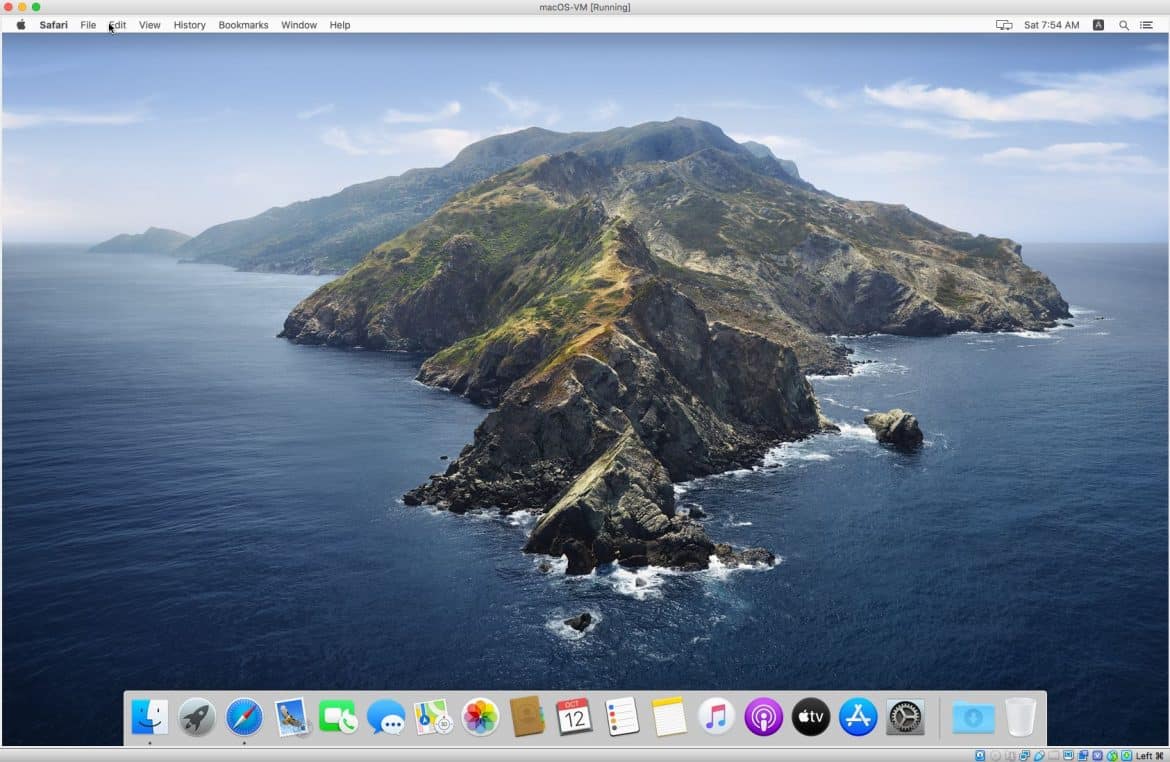Last week I published a video on how to create a bootable ISO file that contained macOS Catalina 10.15 so you can boot into VMWare Workstation 15.5. During the video there were many terminal commands. I promised that I will post up all the commands as a cheat sheet, so you can copy and paste into the terminal to make life easy. Here is the code used during the video below:
btnhd#:> hdiutil attach /Applications/Install macOS Catalina.app/Contents/SharedSupport/InstallESD.dmg -noverify -mountpoint /Volumes/Catalina
Download Mac OS Catalina 10.15 VMDK File Image: Most of Peoples Love Mac Operating System Just Because of Looks, Performance, Customization, and Lost of Feature Which Make Mac Os Stunning but Lots of Peoples Can Afford Macbook That's Why They Want to Use Mac Os in Windows Based Laptop or Desktop You Can Easily Feel Mac Os Environment in Your. To be clear, macOS Catalina Download ISO version 10.15 can be downloaded directly from Apple. Most users find that it is in the DMG format and must be converted using a tool like Ampare if you want an ISO image. To save you time and effort, we and some groups we know have already done this for you. Different providers host each download ISO link.
- Here’s how to clean install macOS 10.15 Catalina on Mac via USB drive the right way using this guide. It’s been a long time coming, but macOS 10.15 Catalina is now available for anyone who has a compatible Mac.
- Download macOS 10.15 Catalina ISO For VMware & VirtualBox Downloading macOS Catalina from AppStore is only for Hackintosh and can be installed on Mac. But the ISO or VMDkw which we are talking about is only made and created for installing macOS Catalina on VMware & VirtualBox on Windows PC. Usb-midi driver v1.3.2-2 for mac macos 10.15-os x 10.5.
btnhd#:> hdiutil create -o /tmp/CatalinaBase.cdr -size 9000m -layout SPUD -fs HFS+J
btnhd#:> hdiutil attach /tmp/CatalinaBase.cdr.dmg -noverify -mountpoint /Volumes/install_build
btnhd#:> asr restore -source /Applications/Install macOS Catalina.app/Contents/SharedSupport/BaseSystem.dmg -target /Volumes/install_build -noprompt -noverify -erase
btnhd#:> rm /Volumes/OS X Base System/System/Installation/Packages
btnhd#:> cp -R /Volumes/Catalina/Packages /Volumes/OS X Base System/System/Installation
btnhd#:> hdiutil detach /Volumes/OS X Base System/
btnhd#:> hdiutil detach /Volumes/Catalina/
btnhd#:> mv /tmp/CatalinaBase.cdr.dmg /tmp/BaseSystem.dmg
#Restore the 10.15 Installer’s BaseSystem.dmg into file system and place custom BaseSystem.dmg into the root
btnhd#:> hdiutil create -o /tmp/Catalina.cdr -size 9000m -layout SPUD -fs HFS+J
btnhd#:> hdiutil attach /tmp/Catalina.cdr.dmg -noverify -mountpoint /Volumes/install_build
btnhd#:> asr restore -source /Applications/Install macOS Catalina.app/Contents/SharedSupport/BaseSystem.dmg -target /Volumes/install_build -noprompt -noverify -erase
btnhd#:> cp /tmp/BaseSystem.dmg /Volumes/OS X Base System
btnhd#:> hdiutil detach /Volumes/OS X Base System/
btnhd#:> rm /tmp/BaseSystem.dmg
btnhd#:> hdiutil convert /tmp/Catalina.cdr.dmg -format UDTO -o /tmp/Catalina.iso

btnhd#:> mv /tmp/Catalina.iso.cdr ~/Desktop/Catalina.iso
btnhd#:>rm /tmp/Catalina.cdr.dmg

One more thing, you will need to get a copy on the unlocker-master files to enable VMware Workstation 15 to run macOS as a guest virtual machine. Go to github.com/btnhd to grab the script.
Create a diskimage (iso) on the Win 10 machine with IMGBURN:
http://www.imgburn.com/index.php?act=download
Check if that model has support for Internet Recovery. If you boot holding Command-R and you have a WiFi connection, it can actually boot into recovery mode without a recovery partition on a drive -- or even without a working drive.
Failing that, use TransMac, which has a 15-day trial period and works flawlessly.
- Make sure the USB drive is formatted using GPT. 'diskpart' on windows can do this. From an administrator rights (elevated) command prompt run:
(Find the disk number) - In the left pane, right click the USB Drive and select Format Disk for Mac
- In the left pane, right click the USB Drive and select Restore with Disk Image
- Point to your .dmg (or choose All Files to select an .iso) file and click Open.
Mac Os X Catalina 10.15 Iso
